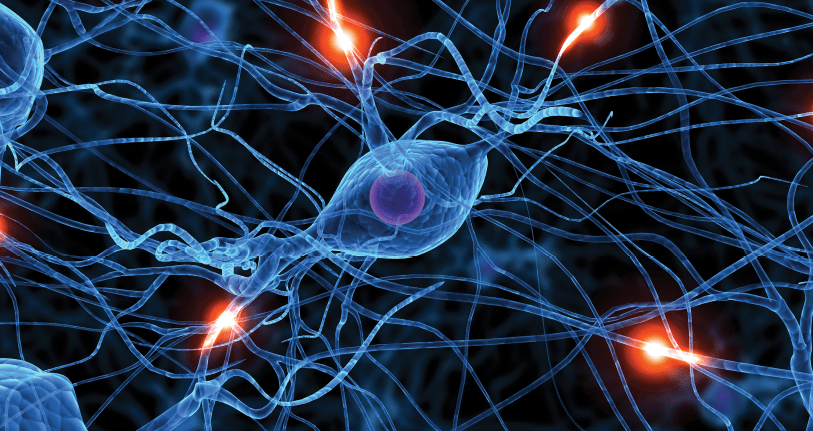In today’s digital world, it’s easy to reach for our phones the moment boredom strikes. With an endless stream of content available at our fingertips, platforms like YouTube, TikTok, Instagram, and Netflix have revolutionized how we entertain ourselves. However, what may seem like an easy way to pass the time could be making our boredom worse. Recent research from the University of Toronto highlights the paradoxical nature of this common habit, revealing that instead of alleviating boredom, endlessly scrolling through digital content may actually be intensifying it.
With the advent of social media and video-sharing platforms, the way we consume content has drastically changed. Gone are the days when we had to wait for our favourite TV show or sit through lengthy movies. Now, we can access a never-ending supply of short videos, memes, and entertainment clips on our smartphones. These platforms are designed to capture our attention quickly, offering a variety of content that caters to different tastes and interests.
The algorithms behind these digital platforms are sophisticated, analysing our viewing habits to recommend content we’re likely to enjoy. While this personalization may seem convenient, it can also create a loop that keeps us scrolling for hours on end, looking for the next entertaining video. This behaviour, known as “digital switching,” involves rapidly moving from one piece of content to another in search of something engaging.
The Study: How Scrolling Intensifies Boredom
A study conducted by researchers at the University of Toronto sought to understand the impact of this modern-day habit on our sense of boredom. Led by Dr. Katy Tam, a postdoctoral researcher at the university, the study explored how watching videos as a means of killing boredom might be counterproductive. The findings were surprising: rather than reducing boredom, constantly switching between videos can actually make it worse.
The research found that when we engage in digital switching—moving quickly from one video to the next—we fragment our attention. Instead of becoming immersed in a single piece of content, we scatter our focus across multiple videos, often without fully engaging with any of them. This lack of deep engagement leads to decreased satisfaction and can heighten feelings of boredom. Essentially, our brains aren’t receiving the meaningful stimulation they crave, which leads to a paradox where more content consumption results in greater boredom.
Immersion vs. Fragmentation: The Key to Enjoyment
One of the key takeaways from the study is the importance of immersion in enjoying digital content. When we become fully absorbed in a single video, movie, or piece of content, we find it more meaningful and satisfying. This immersive experience captures our attention and can genuinely alleviate boredom. However, when we continually switch between different videos, we don’t allow ourselves to become fully engaged. Instead, we’re left with fragmented attention, which diminishes our enjoyment and increases feelings of dissatisfaction.
The research highlights the concept that boredom is closely linked to attention. When our attention is divided, we’re less likely to feel satisfied with what we’re watching. On the other hand, when we focus entirely on one piece of content, we find it more meaningful and fulfilling. This immersion can provide the mental stimulation needed to break free from the boredom loop.
The Role of Algorithms in Digital Switching
Part of the challenge with digital switching is the role that algorithms play in shaping our viewing habits. Platforms like YouTube, TikTok, and Instagram are designed to keep users engaged for as long as possible. They do this by analysing our past behaviour and recommending content that aligns with our interests. While this can lead to discovering new and enjoyable videos, it can also trap us in a cycle of continuous scrolling.
When we become accustomed to this algorithm-driven content, we may find ourselves constantly searching for the next dopamine hit—the next video that will capture our attention. This behaviour can prevent us from fully engaging with any one piece of content, leading to increased boredom. In essence, the algorithms that are meant to enhance our viewing experience can inadvertently contribute to our feelings of boredom by encouraging us to switch between videos too frequently.
The psychological effects of digital switching are significant. According to the University of Toronto study, the act of rapidly moving between videos can lead to several negative outcomes, including:
- Increased Boredom: Despite the intention of killing boredom, digital switching can intensify feelings of boredom by preventing us from becoming fully engaged with any one piece of content.
- Decreased Satisfaction: The fragmented attention that results from digital switching leads to a lack of satisfaction, as we’re unable to fully enjoy or appreciate the content we’re consuming.
- Lower Attention Span: The habit of constantly switching between videos can reduce our ability to focus on longer or more complex tasks, as our brains become accustomed to shorter bursts of information.
- Reduced Sense of Meaning: When we don’t fully engage with content, we’re less likely to find it meaningful. This lack of meaningful engagement can contribute to a sense of emptiness or dissatisfaction.
So, how can we break free from the cycle of digital switching and find more meaningful ways to alleviate boredom? The answer lies in being more intentional with our media consumption. Here are some strategies to help you make the most of your digital entertainment without falling into the boredom trap:
1. Practice Mindful Viewing: Instead of mindlessly scrolling through videos, be intentional about the content you choose to watch. Select videos or shows that genuinely interest you, and allow yourself to become fully immersed in them.
2. Set Time Limits: To avoid getting caught in the endless scrolling loop, set time limits for your digital entertainment. For example, you might decide to watch one or two videos before taking a break, rather than continuously switching between content.
3. Engage in Deep Content: Consider engaging with longer, more substantial content that requires your full attention. Whether it’s a thought-provoking documentary or an engaging series, deep content can provide a more satisfying experience than short, superficial videos.
4. Take Breaks: If you find yourself getting bored or restless while watching videos, take a break. Stepping away from your phone or computer can help reset your attention and allow you to return to your entertainment with a fresh perspective.
5. Limit Algorithm Influence: Try not to rely solely on algorithm-driven recommendations. Explore new content on your own, and don’t be afraid to step outside your usual viewing habits. Discovering new genres or creators can provide a more fulfilling experience.
The Future of Digital Content Consumption
As digital platforms continue to evolve, so too will our habits around content consumption. While the convenience and variety of online videos offer endless opportunities for entertainment, it’s essential to be mindful of how these habits impact our mental well-being. The findings from the University of Toronto study serve as a reminder that more isn’t always better when it comes to digital entertainment. Sometimes, less is more—especially when it comes to finding meaningful ways to alleviate boredom.
Moving forward, both consumers and content creators need to consider the psychological impact of digital switching. By promoting deeper engagement with content and encouraging mindful viewing habits, we can create a healthier relationship with our digital entertainment.
In our fast-paced, content-driven world, it’s easy to fall into the habit of endlessly scrolling through videos in search of something entertaining. But as the University of Toronto study shows, this habit can actually make our boredom worse, not better. By understanding the importance of immersion and attention, we can break free from the cycle of digital switching and find more meaningful ways to engage with the content we consume.
Whether it’s through mindful viewing, setting time limits, or exploring new types of content, finding balance in our digital habits is key to enjoying our entertainment without falling into the boredom trap. After all, the goal isn’t just to kill time—it’s to find content that truly enriches our lives.

 In our fast-paced, content-driven world, it’s easy to fall into the habit of endlessly scrolling through videos in search of something entertaining. But as the study shows, this habit can actually make our boredom worse, not better.
In our fast-paced, content-driven world, it’s easy to fall into the habit of endlessly scrolling through videos in search of something entertaining. But as the study shows, this habit can actually make our boredom worse, not better.







.jpg)












.jpeg)

.jpeg)
.jpeg)

.jpeg)


.jpeg)



.jpeg)
.jpeg)
.jpeg)


.jpg)


.jpeg)
.jpeg)